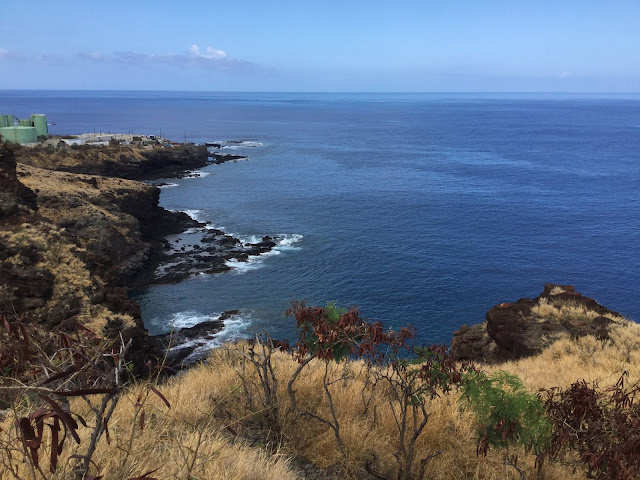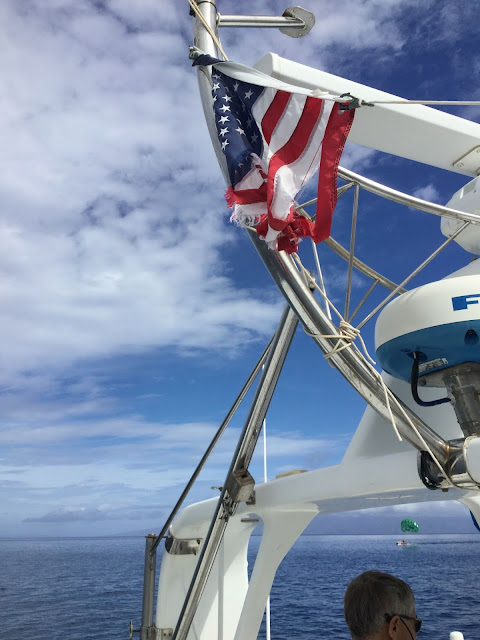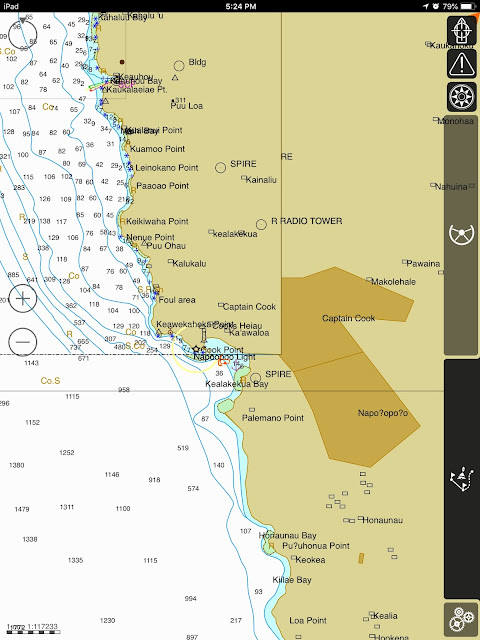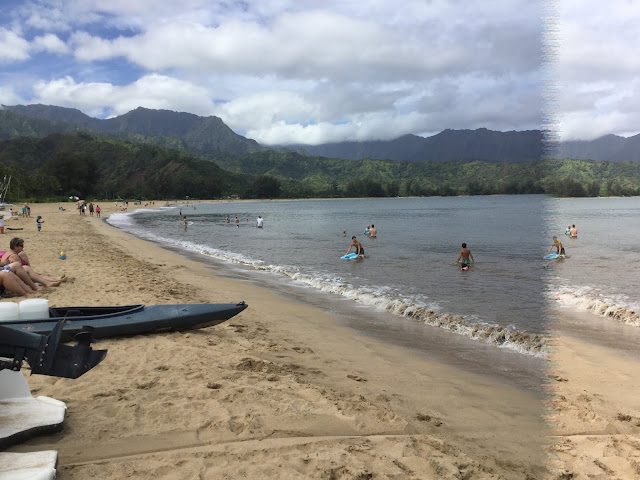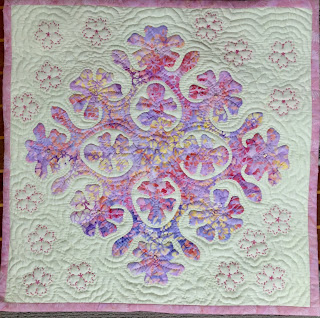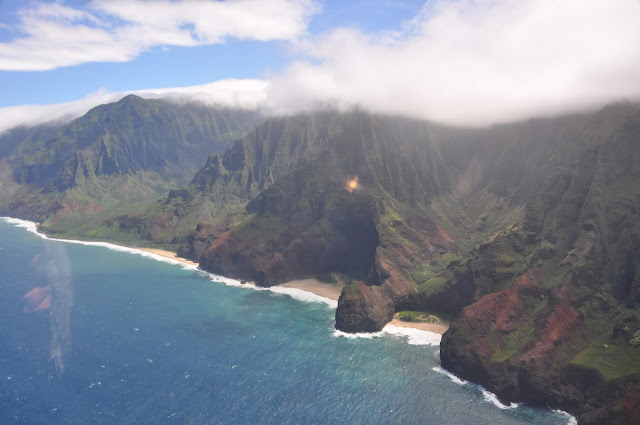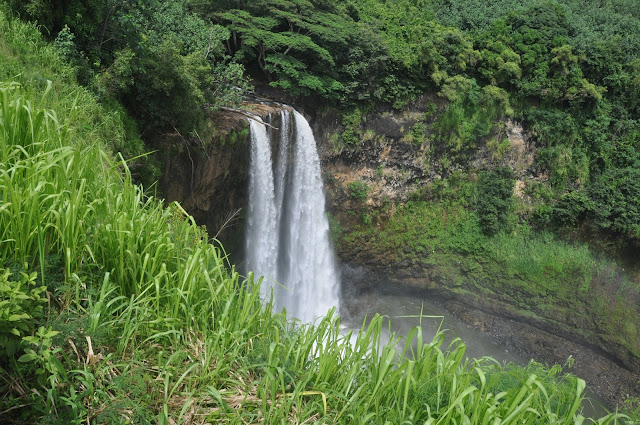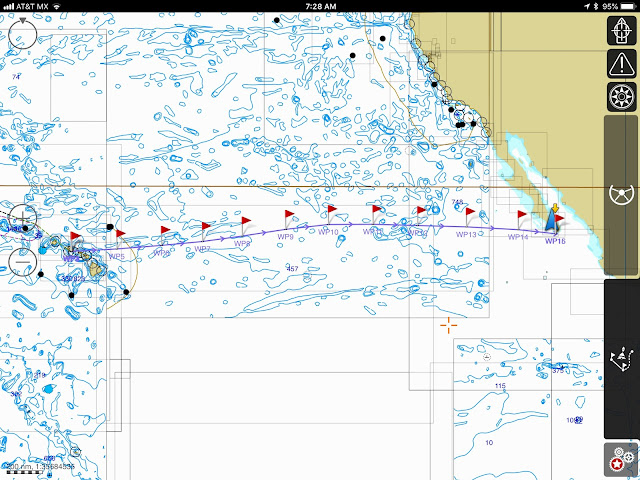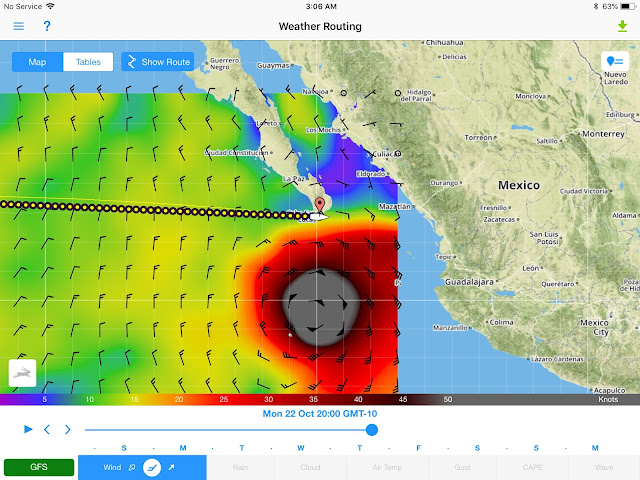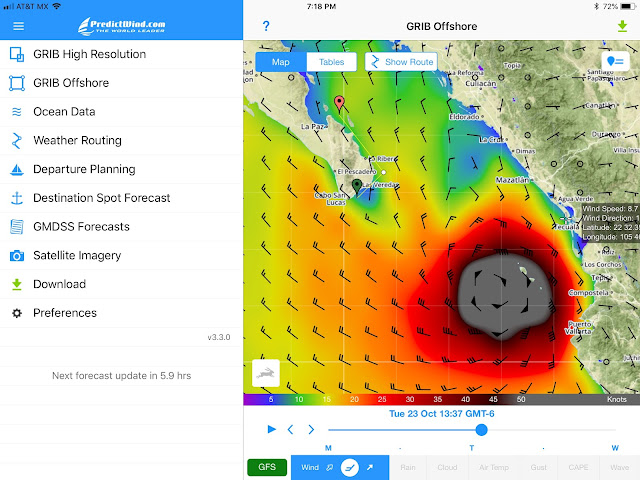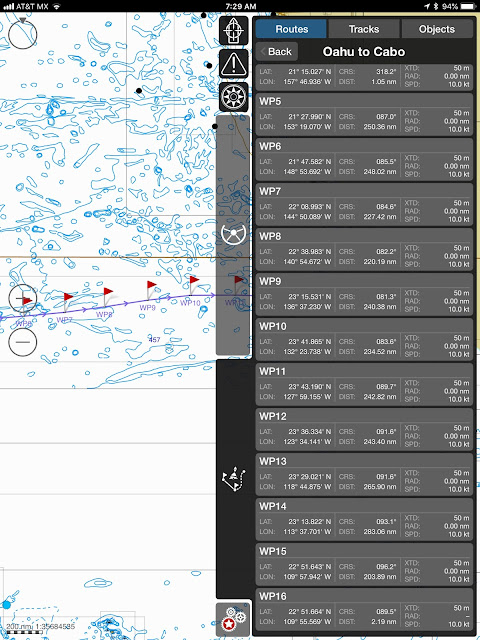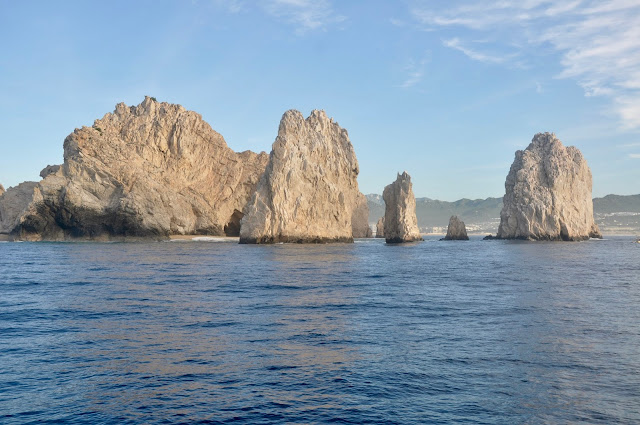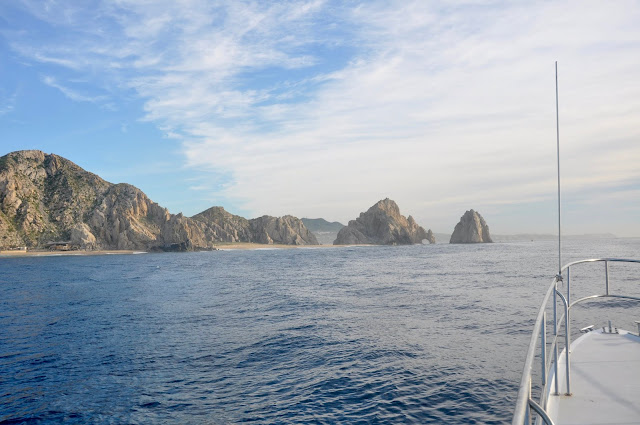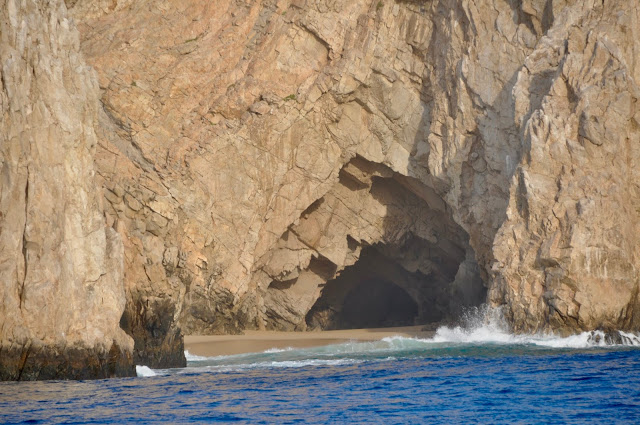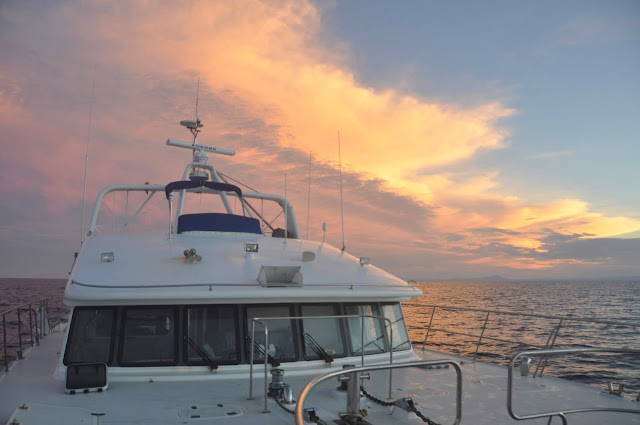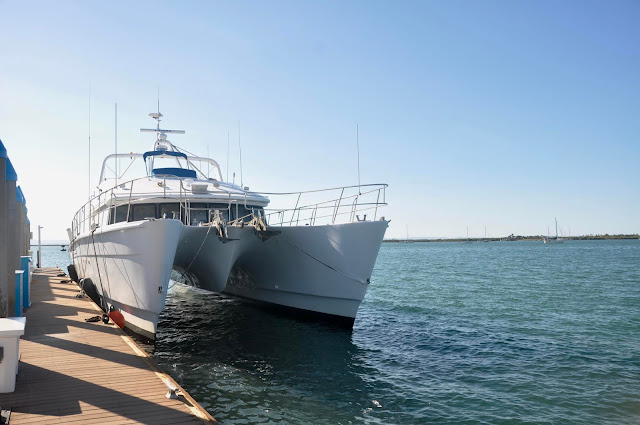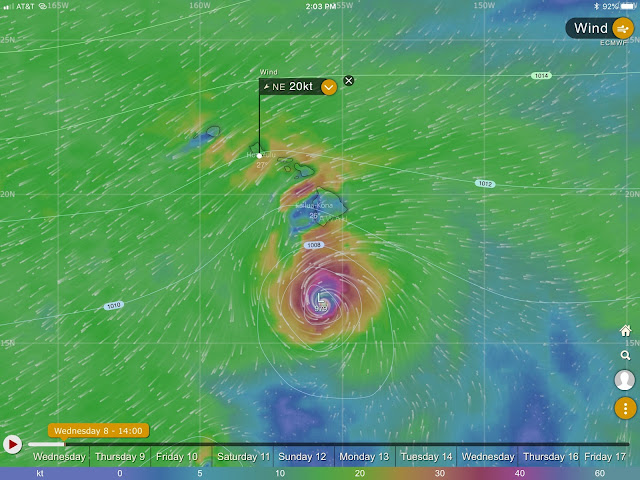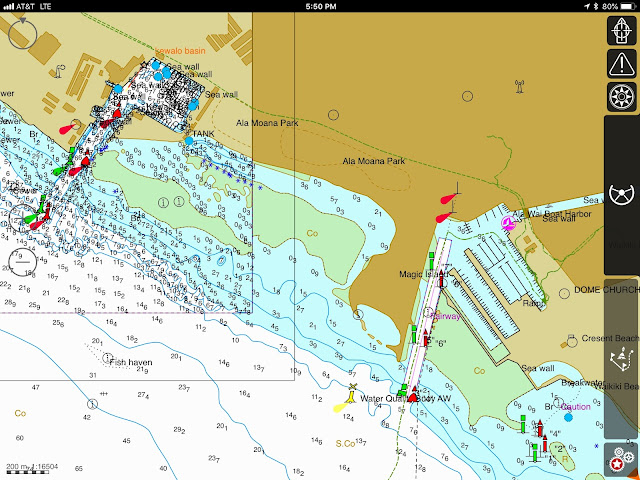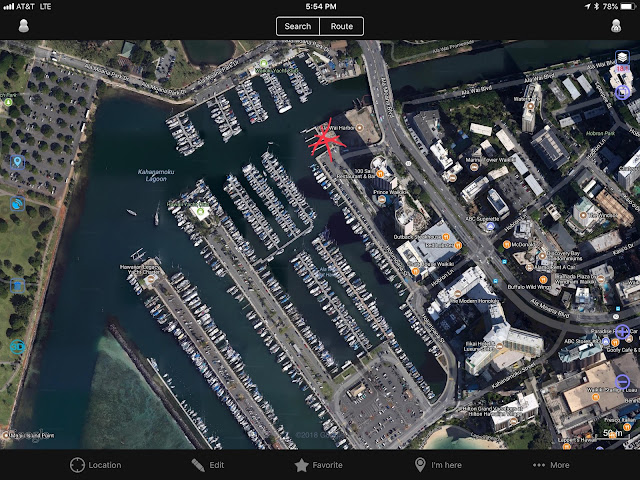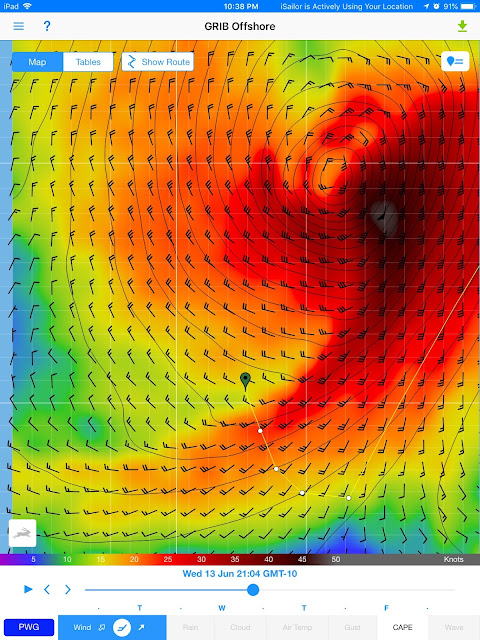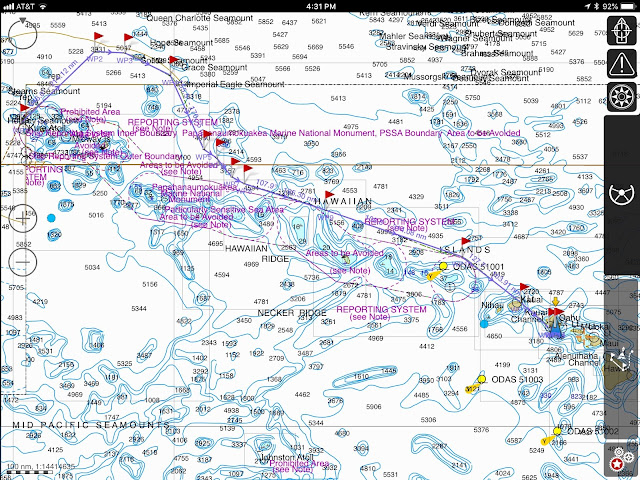| Cruising Natata Island, Kiribati… all alone |
This distrust comes, we believe, from large-production powercats designed primarily for the charter business. For economic reasons, these yachts pack 3-4 cabins and 3-4 heads on a small platform, the hulls being wide enough to accommodate guest berths, and on short hulls to minimize marina cost. It’s basic: short + wide hulls = poor performance. Typically, these boats slam in head seas, plow at any speed, and have a short range of 500-800 NM. They are wonderfully perfect for a week charter in the Caribbean or the Mediterranean, but totally unsuitable for trans-oceanic passages. And so, the delivery skippers who must bring these boats from the constructor (European or South African) to the US market have a terrible ocean-crossing experience: the boat slams, the performance is poor, and the skipper is on edge the entire trip. No wonder powercats have such a bad rep! All it takes is a few negative comments from exhausted, all-knowing, professional delivery skippers to sow seeds of doubt into the yachties’ minds, and who can blame them? But let’s not compare apples to oranges.
| DOMINO in Ureparapara, Banks Islands, Vanuatu |
Charter yachts are wonderful for their application: a week or two of short cruise for 3-4 couples who want to have fun. Small powercats with short-to-medium range are also wonderful to do the ICW or the Great Loop, to cruise the Med, to remain around New Zealand (though we haven’t seen any charter powercats in NZ: all private.) But they are not – I repeat, NOT – to be compared with the very few trans-oceanic powercats. Of course, our DOMINO is such a ship, as others such as the newly-refurbished November Rain (another Malcolm Tennant design.)
| DOMINO in Nuku Hiva, Marquesas |
Fifteen years ago, we embarked on a journey with one main goal: to prove that a well-designed powercat was a very desirable cruising platform: faster, more fuel-efficient, safer, more comfortable, more stable than any monohull in the same price bracket, with a go-anywhere and self-sufficient mentality. We have cruised almost non-stop for 9 years, clocked 53,000 NM through 45 countries, completed 3 Transpacs, ditched a dozen hurricanes and shouldered a rogue wave, dropped anchor some 800 times, and—we think—have proven the point: powercats are a more desirable long-range cruising platform than monohulls. I know we will not convince many people, especially in the US and Canada, but this is not about convincing anyone; we just wanted to share our final thoughts at the end of an incredible ride.
| The amazing WHAI – 47′, dry stack, sleeps up to 16, cruises at 7 Kts, goes anywhere, the most fun boat around! |
The oldest we know of is the WHAI in New Zealand. We first met them in Fiji, then again cruised on the WHAI in New Zealand, the happiest boat we’ve ever been on. For history, Peter Spurdle, a very young WWII flying Ace, designed and launched the WHAI in the 1970’s. Of course, the NZ authorities didn’t want to homologue his catamaran, so he cruised it from NZ to Japan and back, just to prove that it was seaworthy. The story makes for a compelling read! We had the great pleasure to bump into the WHAI and its current owner, John, for some wild times!
A very stable platform, so stable that many ferry lines have converted their fleets to catamarans. In Fiji we came across the MALOLO CAT, surprisingly our sister ship! The builder used the DOMINO 20 hull and built a ferry on it.
Twice a day, the MALOLO CAT would cruise by us and honk. Usually, when a big boat cruises by us at high speed, we hang on to our coffee mugs. Not so with the MALOLO CAT since they don’t throw any wake… and neither do we!
 |
| Cruising French Polynesia… the dreamy waters of Opunohu Bay, Moorea |
Speed and Versatility – While the majority of monohulls cruise at 7-9 kts, our average speed over the entire 9 years has been 10 knots. Sometimes we troll at 7.5 knots, and sometimes we run at 12 knots, sometimes we run away at 20 knots. This power allows us to pick our departure and arrival time, wait for the latest weather report to decide on our route and dodge hurricanes.
| DOMINO at Norsand Yard, New Zealand |
Fuel economy – DOMINO’s hull:width ratio is close to 16:1, which means that we have no hull speed. We don’t need to unleash insane amount of power to go over our bow wave. We have no bow wave, no wake. As Malcom Tennant used to say, we “DISPLANE,” which is neither displacement nor planing, but rather a lifting of the entire hull once we hit a certain speed: at about 15-16 kts, the hulls lift about 15cm and the boat just flies. It’s a sight!
| Water spout in Belize Speed will get us out of there quickly |
- at 10 kts (1050 rpm), less than 5 gph (better than 2 miles/gallon)
- at 7.5 kts , 1.8 gph
- at 20 kts (2100 rpm), 24 gph
| Galley with a view |
Safety – Most monohulls come with only 1 engine. Some have a get-home engine, others have a sailing rig. In most cases, this is OK, but how fast can a boat move on these minimal get-home systems? Will they get you home? Will the small engine be strong enough to push you against a nasty blow? Will the wind blow in the right direction to actually sail you home? As for us, we felt much safer having two big John Deere 300 HP engines. If one fails, the other one is able to keep us going at 7-8 knots for 8,000 NM!
| Able trawler, New Zealand |
We have seen very few trawlers in the South Pacific. A few Nordhavn, all larger than 62’, and the excellent Reel Dreams (A Kadey Krogen 48-I think- with twin diesel engines) – I know that smaller monohulls have made it around the world (EGRET) and I recall my favorite Nordhavn 57, BAGAN, making it to Tahiti, as well as some Rohmsdahl and Diesel Ducks, but compared to sailing yachts, very few motor yachts under 65’ cross from North America to the South Pacific. I’m not talking obout the Dashew FPB, a whole different class and concept, very seaworthy, or not even about Denis Harjamaa’s new line, including Wayne Hodgkin and Christine Kling’s MOBIÜS. These are extraordinary monohulls, in a class of their own, physically and financially, but share with our hulls a basic concept: long and skinny.
 |
| Iconic: Bora Bora |
I’m not sure why we have met so few monohulls; perhaps few of us have a true spirit of adventure; or perhaps very few feel safe on a small boat. Yet, we have safely crossed three times:
- Galapagos to Marquesas and beyond (3,000 NM)
- Marshall Islands to Midway to Hawaii (2800 NM)
- Hawaii to La Paz (2800 NM)
| DOMINO in Majuro, Marshall Islands |
What about rolling over? This may be the biggest objection we hear. “Cats capsize all the time!” This is far from the truth for powercats. It is true that some racing sailing cats push the envelope, over-canvassing their rigs, and some very famous yachtsmen have been lost that way; others under-laminate their hulls for the sake of performance, rendering them very fragile, and we indeed heard a PAN-PAN in Hawaii a few weeks ago to rescue a holed racing cat: the hull had delaminated and repeated beam-sea impacts holed the hull. But it is not so with long-range powercats, and especially not of Tennant’s CS hull design. These hulls have been tank-tested and never capsized. Last month, while returning to Maui after escaping Hurricane LANE, we were surfing 10-12’ seas when a rogue wave appeared to starboard: a white wall, foaming and taller than our ship, slammed us. To JP’s amazement, DOMINO tilted to 45* one way, slid a bit, tilted to 45* the other way, and went on surfing while shaking the white foam and green water from the flybridge. I dare any monohull to behave as well as this powercat!
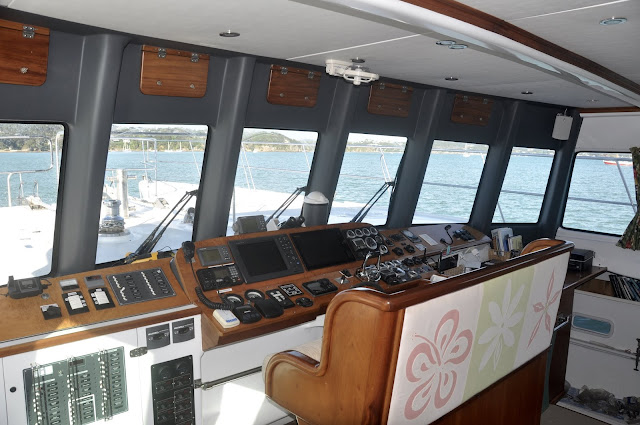 |
| The helm… a watch bench rather than 2 heavy chairs. Weight matters. |
Rooms with a view – Like their sailing cousins, powercats have spacious common living decks with large windows and amazing views. In our case, we also elected to have our stateroom on the main level so that we never need to go up or down stairs for activities of daily living. This one-level living has saved our knees and prevented accidental falls. So, yes, we do consider this arrangement safer than any up-down set-up typical of a monohull.
| My favorite spot to watch shooting stars |
No stabilizer needed – When we first considered a design, mono-vs-multihull, stabilization was our main concern.
Paravanes? I didn’t feel comfortable with handling paravanes, especially close to shore (crab pots) or in large seas (Remember the ANDREA DORIA and the Perfect Storm movie? That fish slamming through the window freaked me out!)
Active fins? We also were a bit concerned with draft associated with active fins sticking out from under the boat, a danger in reefy spots. How much water gets into the hulls when the active fin rips off the bottom? How quickly can it sink a monohull?
Water ballast? At the time, water ballast wasn’t an option, but our friends Wayne Hodgkins and Christine Kling are building their MOBIÜS aluminum monohull with water ballast, and we like that. This said, catamarans have no need for stabilizer.
 |
| Our favorite anchorage in the world: Natata Island, Kiribati |
What with beam seas? Haaaa. Beam seas!!! Tell me who enjoys 8-10’ beam seas? While a sailboat will likely be fairly steady (but tilted at an angle) a powercat will sway, a short roll— tic-toc — but yes, it will roll and won’t be comfortable. I have no idea how a monohull will behave in such seas, not having had the experience… so, you tell me! I don’t think any of us enjoys beam seas: we wedge ourselves in and wait patiently for it to be over. I must admit that DOMINO, being taller and narrower than ordinary cats, has a tendency to roll a bit more than others in beam seas. However, its height prevent it from slamming. That’s right, NO SLAMMING!
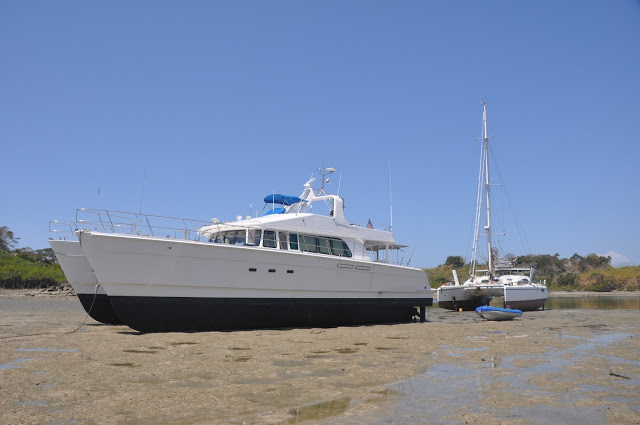 |
| Hull cleaning and below-water maintenance: piece of cake on a sand spit! |
On the other hand, we have been able to beach on sandspits and do our own hull cleaning. We’ve done so many times during our 18 months in Panama.
| Docked in Waikiki… temporary dock. |
All the advantages that we find in powercats — speed, fuel efficiency, safety, comfort, versatility— have convinced us that they are superior world-cruising platforms. Yet, there MUST be some downsides, right?
| Docked at Marsden Cove, New Zealand |
Pioneering – This reluctance to powercat was just brought up to my attention. While there is plenty of info on cruising oceans on a monohull, there is hardly any write-up on crossing oceans on a powercat (in spite of my last 9 years of reporting.) Frankly, I don’t see the difference. The sea is the same, the conditions the same, and powercats’ higher speed capability allows them to thread through narrower weather windows (see our blog on TRANSPAC III as we ducked ahead of Hurricane WILLA.)
| Dodging weather… and hardly a wake behind us |
When we splashed in 2009, we had never been on anything larger than our 21’ ski boat, had never spent a night on a boat, never been offshore, let alone crossed an ocean. We learned, one day at a time. We’ve done all the powercat pioneering and blogged about it, the good, the bad and the ugly! So have our friends on NOVEMBER RAIN, now refurbished as a fantastic fishing charter based out of Vanuatu and New Zealand.
 |
| DOMINO’s cockpit holding a briefing with the Sea Mercy Fiji recovery team |
| Spacious cockpit: party 60, business meeting for 20, dinner for 12, breakfast for 6, farniente for 2 A leaf extension fits between the 2 bistro tables |
I first blogged about powercats on December 17, 2007. That’s eleven years ago. Since then, the page has logged over 600,000 reads. JP and I hope that we have somewhat de-mystified the Passagemaking Powercats and encouraged a few of our readers to consider them as their next cruising platform.




